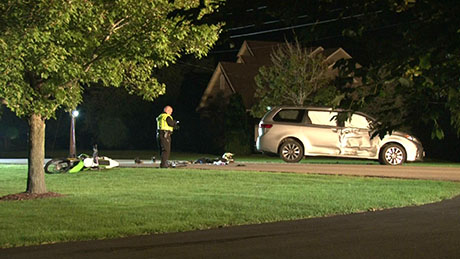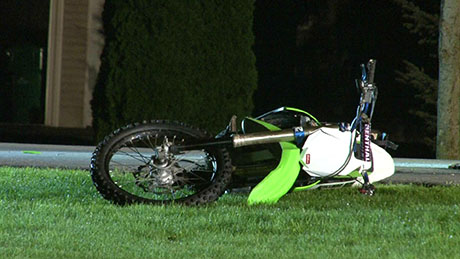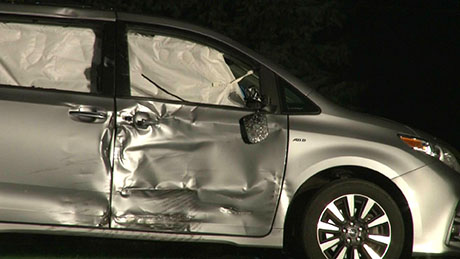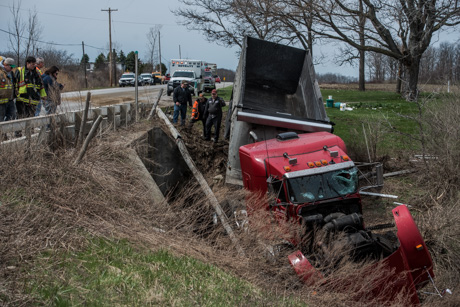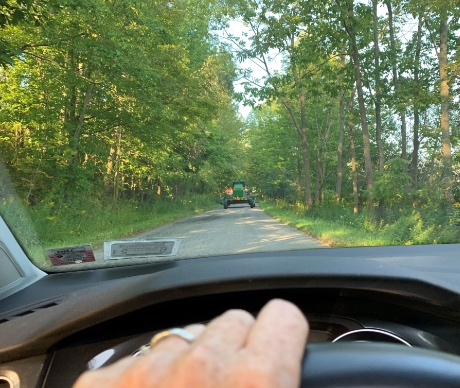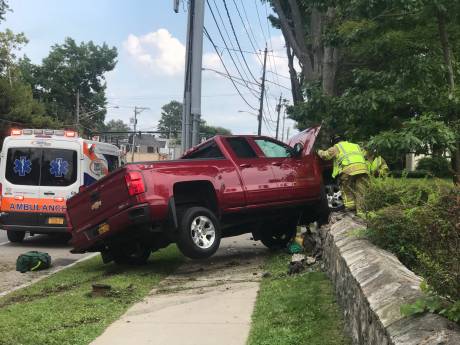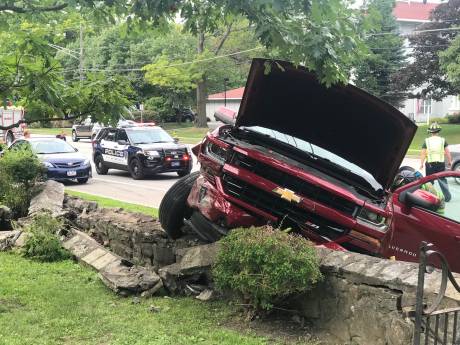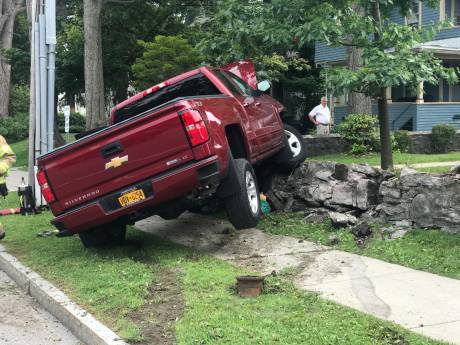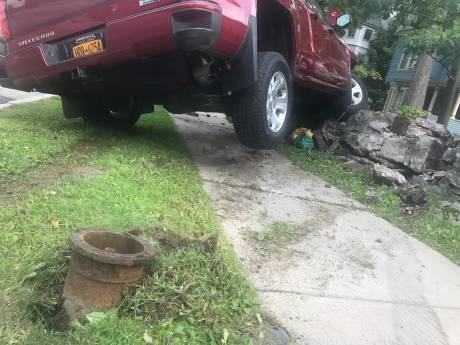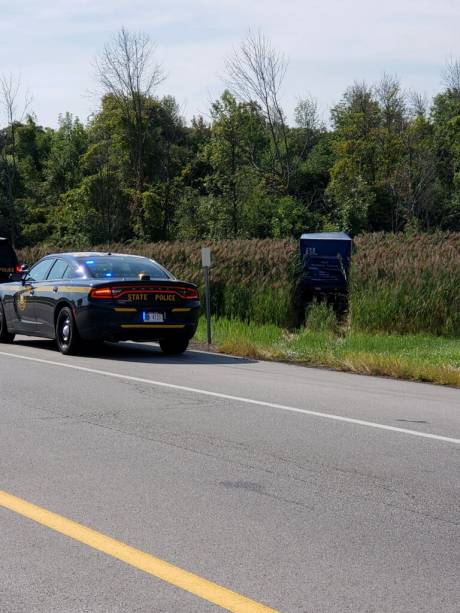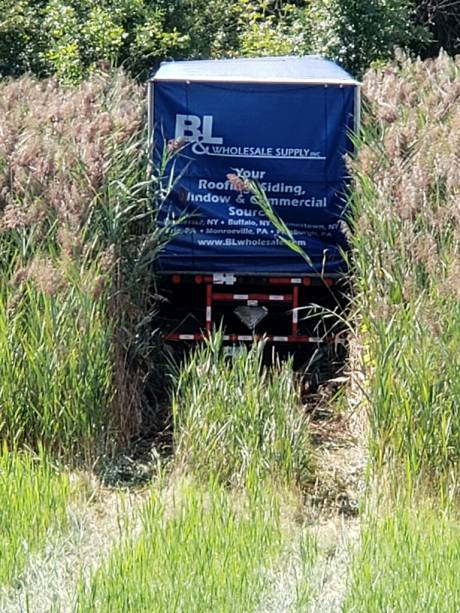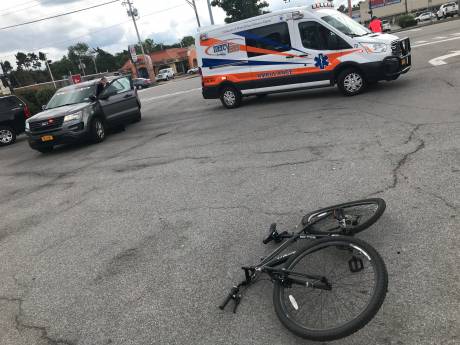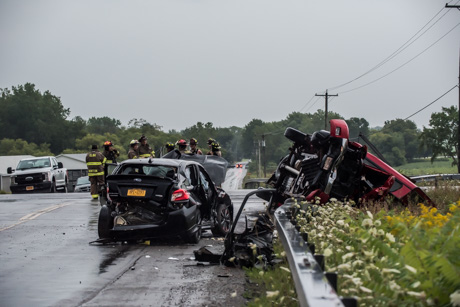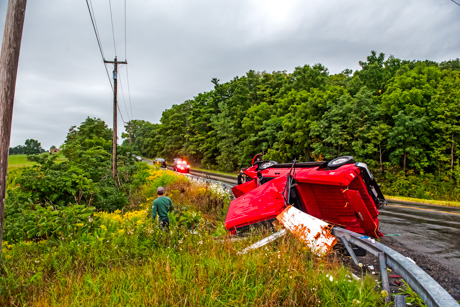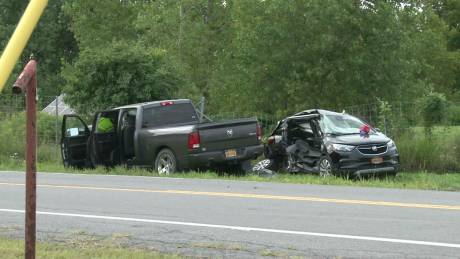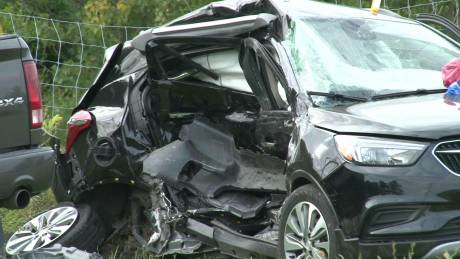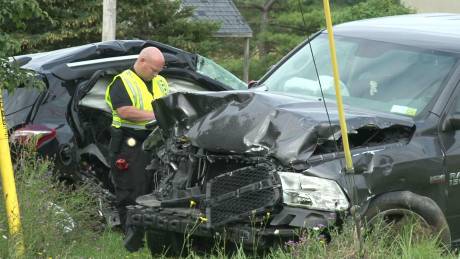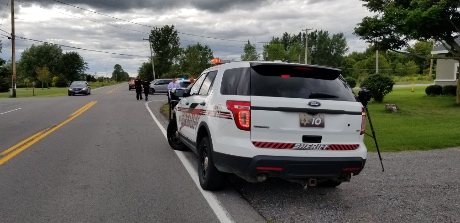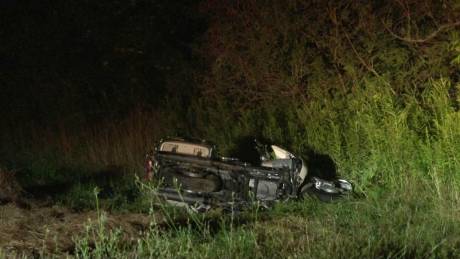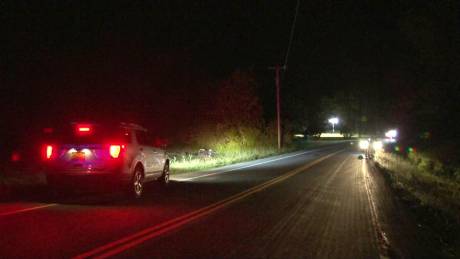Information from New York Center for Agricultural Medicine and Health:
Genesee County is one of the state's top five farming counties by sales, with more acreage dedicated to corn for grain and silage than any other local crop. And this is the time of year motorists can expect to begin sharing the road more frequently with tractors, combines and other farm equipment.
So it's an especially good time to pay attention on rural roads to reduce the likelihood of accidents.
A fatal accident involving farm equipment occurred this year in Genesee County. In any given year, there are also accidents here involving farm equipment and motorists that result in minor or serious injuries.
Though only 19 out of every 100 Americans live in rural areas, more than half of fatal roadway accidents take place in rural areas, according to the U.S. Department of Transportation. The Centers for Disease Control and Prevention reports that agriculture, forestry, and fishing as an occupational group has the third highest rate of work-related roadway crashes.
Collisions involving tractors and other farm equipment are the deadliest rural road accidents in New York.
In fact, crashes involving agricultural vehicles were found to be five times more fatal than that of non-ag crashes, according to the Rural Road Accident Study by the New York Center for Agricultural Medicine and Health (NYCAMH).
The study was funded by Columbia University Center for Injury Science and Prevention and published recently in the Journal of Agromedicine. It was conducted because although agriculture-related crashes have been explored in the Midwest and South, little was known about agriculture-related crashes in the Northeast, specifically in New York.
NYCAMH released its findings this week in advance of National Farm Safety & Health Week (Sept. 15-21) and as the harvest season approaches.
For the study, electronic records from the NYS Department of Motor Vehicle (DMV) Accident Reports (MV-104) for 2010-2012 were analyzed. Agricultural cases were identified using variables for the vehicle body type and vehicle registration.
During this three-year time frame, NYCAMH researchers identified 203 agriculture-related accidents involving 381 vehicles and 482 people.
Of the agriculture incidents, 91.6 property caused property damage, while 36 percent caused injury.
Incidents involving farm vehicles or equipment tended to be more severe than non-ag crashes in terms of the number of vehicles involved, the extent of the injuries, and the number of resulting deaths.
Of the agriculture-related incidents, the most common event was a collision with another vehicle (80.8 percent). The second most common was a collision with a fixed object such as a ditch or embankment (10.3 percent), followed by an overturn/non-collision event (3.4 percent).
Poor weather conditions were rarely a factor in these events.
The study found straightaways tend to be most common crash site and crashes on straight roads with a grade were twice as common in ag-related crashes than in non-ag crashes.
NYCAMH deputy director Erika Scott speculates that this is due to non-agriculture vehicles attempting to pass slower-moving agriculture machinery on straightaways.
Although one likes being caught behind a tractor or other slow-moving farm vehicle, waiting a minute or two before you pass could make a lifetime’s difference.
NYCAMH has worked with the New York State Governor’s Traffic Safety Committee on issues surrounding slow-moving vehicle use. These initiatives have brought together the farming community, safety professionals and emergency services to raise awareness of slow-moving vehicles on the roadway.
If you’d like more information on this research, please contact the NYCAMH information specialist at info@nycamh.org. The abstract for this article can be found here.
Know the Signs
A bright orange triangle-shaped Slow Moving Vehicle (SMV) emblem, by law, must be mounted on any machinery that travels less than 25 mph on public roads.
NEW: A Speed Identification Symbol (SIS) is newly required by NYS law for equipment that moves between 25 and 40 mph.
Examples of slow-moving vehicles that these regulations apply to include tractors, self-propelled agricultural equipment, implements of husbandry, road construction and maintenance machinery, and animal-powered vehicles.
Seconds Count -- Tips for Sharing the Road with Farm Equipment during the Growing Season:
Motorists:
- Slow down. The faster you drive, the longer the stopping distance. When speed doubles from 30 mph to 60 mph, the stopping distance more than triples.
- Never pass with limited visibility or in a no-passing zone.
- Be alert for farm equipment that may be turning left. Tractors not only turn onto roads or into driveways but can also turn into fields.
- Slow down and increase following distance if you come upon equipment with an SMV emblem.
Farmers:
- Machinery must display a slow moving vehicle emblem when traveling under 25 mph. In addition to the SMV emblem, tractors and machinery must also display a speed-appropriate speed identification symbol (SIS) when travelling between 25 and 40 mph. Never exceed the top-rated speed of any trailed implements.
- Use proper lighting on farm equipment, including flashing amber lights in the front and rear. Use lights and flashers at all times of the day for increased visibility. Use of lights on tractors is required after dark and during times when visibility is reduced under 1000 feet.
- Stay in the lane, do not drive equipment half on the shoulder and half on the road. A tractor can easily lose control on a soft shoulder. Ditches that parallel most rural NY roadsides can cause potentially fatal rollovers for tractors.
Both:
- Look down the road as far as possible to be aware of what is coming and increase your warning time. At 60 mph, a vehicle is covering 88 feet per second.
- Distractions can double your reaction time. Pay attention and keep your phone shut off while driving. Hands-free phones are legal to use but can still be a distraction.
Top photo -- file photo from accident scene on April 13, 2017 on Route 20, Bethany. The wrecked tractor-trailer passed another tractor-trailer on a hill only to come upon a farm tractor towing a manure spreader. The farm tractor had just made a left-hand turn into a driveway, but the manure spreader was still in the roadway and the passing tractor-trailer clipped the rear of it and tore off the spreader's rear axel. Loaded with 80,000 pounds of cargo, the big rig continued off roadway into a guard rail and down a deep culvert into a creek filled with water. The trucker suffered a big bump on his forehead. Citations were issued. They had a lot of manure to clean up on Route 20 as a result of the accident.
Inset photo of SMV/SIS sign and bottom photo on rural road courtesy of New York Center for Agricultural Medicine and Health.
NYCAMH, a program of Bassett Healthcare Network, is enhancing agricultural and rural health by preventing and treating occupational injury and illness.
